Are you tired of pesky fruit flies constantly buzzing around your guava? These tiny insects not only ruin your fruit’s appearance but can also spread disease and bacteria. The good news is that controlling fruit flies in guava is simpler than you might think. Fruit flies are a common pest that reproduces quickly, laying hundreds of eggs on moist foods like overripe fruit and vegetables. They can become a problem in the home.
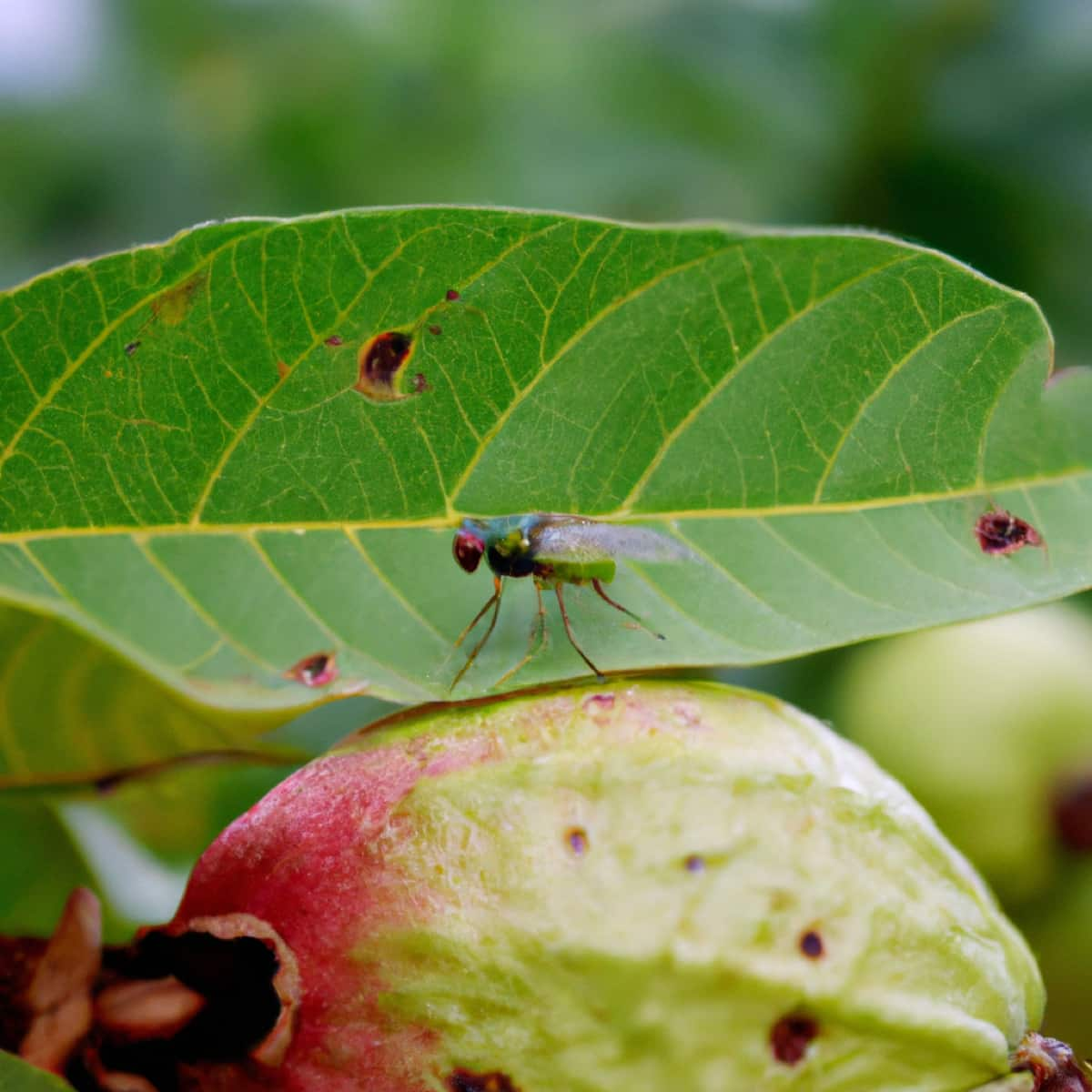
Still, there are simple and effective ways to eliminate fruit fly traps made from household supplies. These traps can be effective in getting rid of fruit flies. In this blog article, we discuss the symptoms of a fruit fly infestation in guava trees and share some simple and effective methods for eliminating fruit flies from your guava so you can enjoy your fruit, as well as treatment and management options to help get rid of these pests.
Key rules to get rid of fruit fly in Guava
About Guava plant and insect pest
Guava (Psidium guajava) is a tropical fruit tree native to Central and South America, cultivated in tropical and subtropical regions worldwide. The tree can grow up to 30 feet tall and produce a round or oval-shaped fruit, typically green or yellow when ripe. Guava is known for its sweet and tangy taste and is a good source of vitamin C and other nutrients. Guava plants are relatively hard and easy to grow, but they can be susceptible to certain pests and diseases. Some common pests that attack Guava are mentioned below.
The fruit fly is a major guava pest. The guava fruit fly, also known as the Mexican fruit fly or Anastrepha striata, is a common pest of guava trees. It lays its eggs inside the fruit, causing it to rot and become unmarketable. Other pests affecting Guava include the guava whitefly, mealybugs, and scale insects.
- Fruit flies: These tiny insects are attracted to the smell of ripe Guava and can lay their eggs on the fruit, causing it to become infested with maggots.
- Mealybugs: These small, white insects suck the sap from guava leaves and fruit, causing them to become distorted and discolored.
- Whiteflies: Like mealybugs, whiteflies suck the sap from guava leaves and can cause damage to the plant.
- Aphids: These small, green, or black insects feed on the sap of guava leaves and can cause them to become distorted and discolored.
In case you missed it: 10 Practical Applications of AI in Agriculture: Impacts and Benefits of Crop Health and Yield
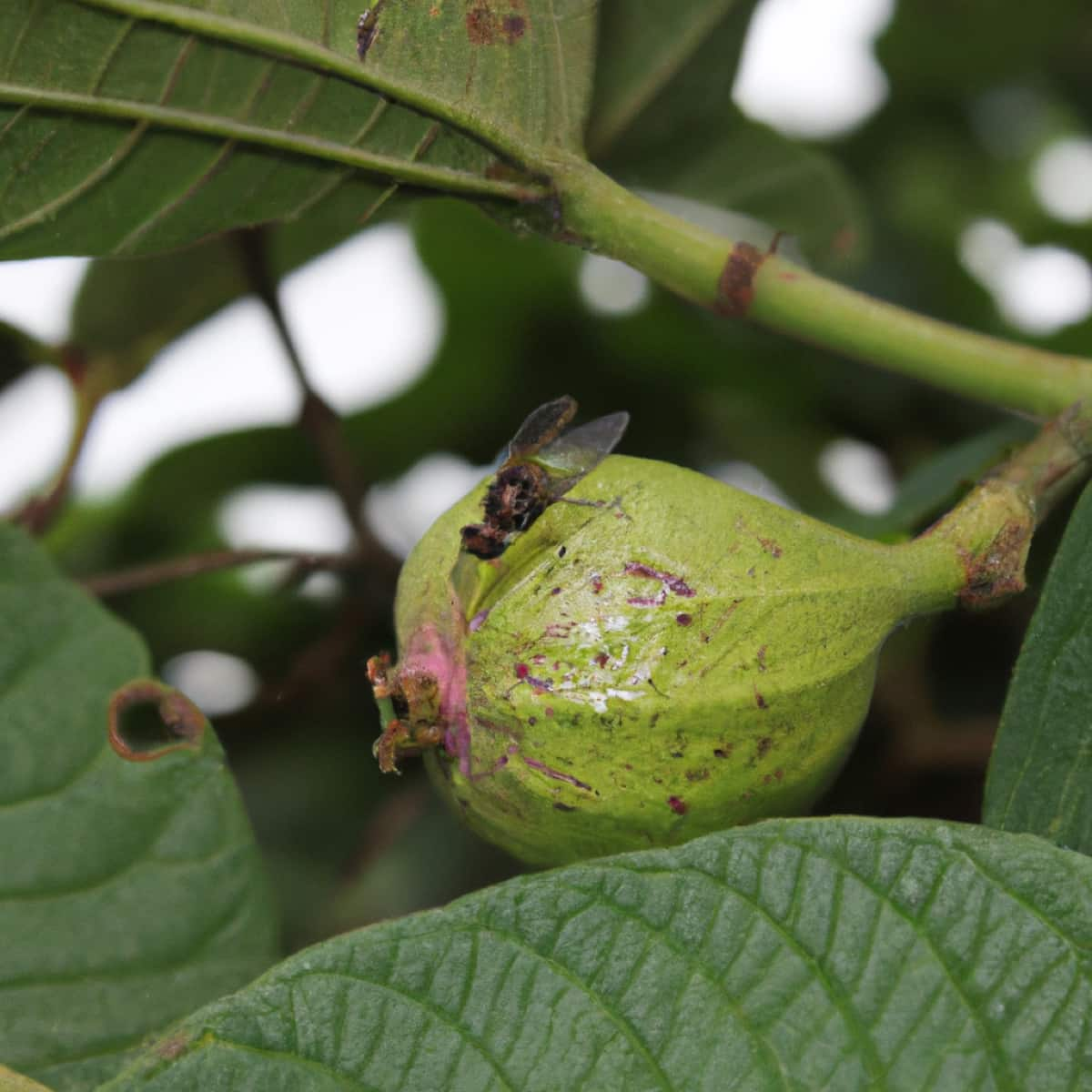
How does a fruit fly look like?
Fruit flies are small, winged insects that are common pests of many types of fruit, including Guava. They typically have red or black eyes, tan or yellow bodies, and dark-colored wings. Adult fruit flies are easily recognizable by their quick, darting flight patterns. The larvae, or maggots, of fruit flies are small, white, legless creatures found inside the fruit.
They can cause significant damage to fruit by feeding on the flesh and causing the fruit to rot. Fruit flies are drawn to overripe or rotting fruit and lay their eggs within it. The fertilized eggs turn into maggots, which feed on the fruit and cause additional harm. Adult fruit flies can also feed on the sap of fruit trees and other plants, causing leaf and branch damage.
How does fruit fly infestation occur?
Adult flies lay their eggs on or near ripe or overripe fruit, resulting in fruit fly infestations. The larvae hatch from the eggs and dig into the fruit, consuming it from within. It has the potential to turn the fruit mushy and unpleasant. It can also make it more prone to other forms of deterioration. Fruit flies are drawn to the ripening fragrance of fruit and are frequently found around food sources such as garbage cans, compost piles, and outdoor fruit bushes. They can also enter through open doors, windows, gaps, and crevices in the walls and foundation.
Lifecycle of fruitFly
The fruit fly’s life cycle (Drosophila melanogaster) is relatively short, taking 8-16 days under ideal conditions. A fruit fly’s life cycle includes the following stages:
- Eggs: Female adult fruit flies lay eggs on or near ripe or overripe fruit. The eggs are small, white, and cylindrical. They are deposited individually or in groups and hatch in 24 to 48 hours. A female fly can lay more than 3,000 eggs in her lifespan under ideal conditions. Still, 1,200 to 1,500 eggs per female are considered the average productivity in the field.
- Larva: After hatching, the eggs develop into larvae. These are small, legless, and white. The larvae consume the fruit from the inside, causing it to become mushy and unappealing. The mature larva crawls out of the apple, falls to the ground, and develops a tan to dark brown puparium.
- Pupa: Pupation occurs in the soil. About nine days are required to attain sexual maturity after the adult fly emerges.
- Adult: After a few days, the pupae emerge as adult fruit flies. Adult fruit flies have a brown or dark brown bodies with hyaline wings and yellow legs. They have red eyes. Adult fruit flies can live for several weeks and are capable of reproducing during this time.
Fruit flies can have multiple generations in a single year, and adult flies can start reproducing within a week of being born. It helps them rapidly increase in population size, making them a pest to control.
In case you missed it: Key Rules to Start a Greenhouse Farming in Mexico: Business Plan, Setup Cost, Profit, and Management
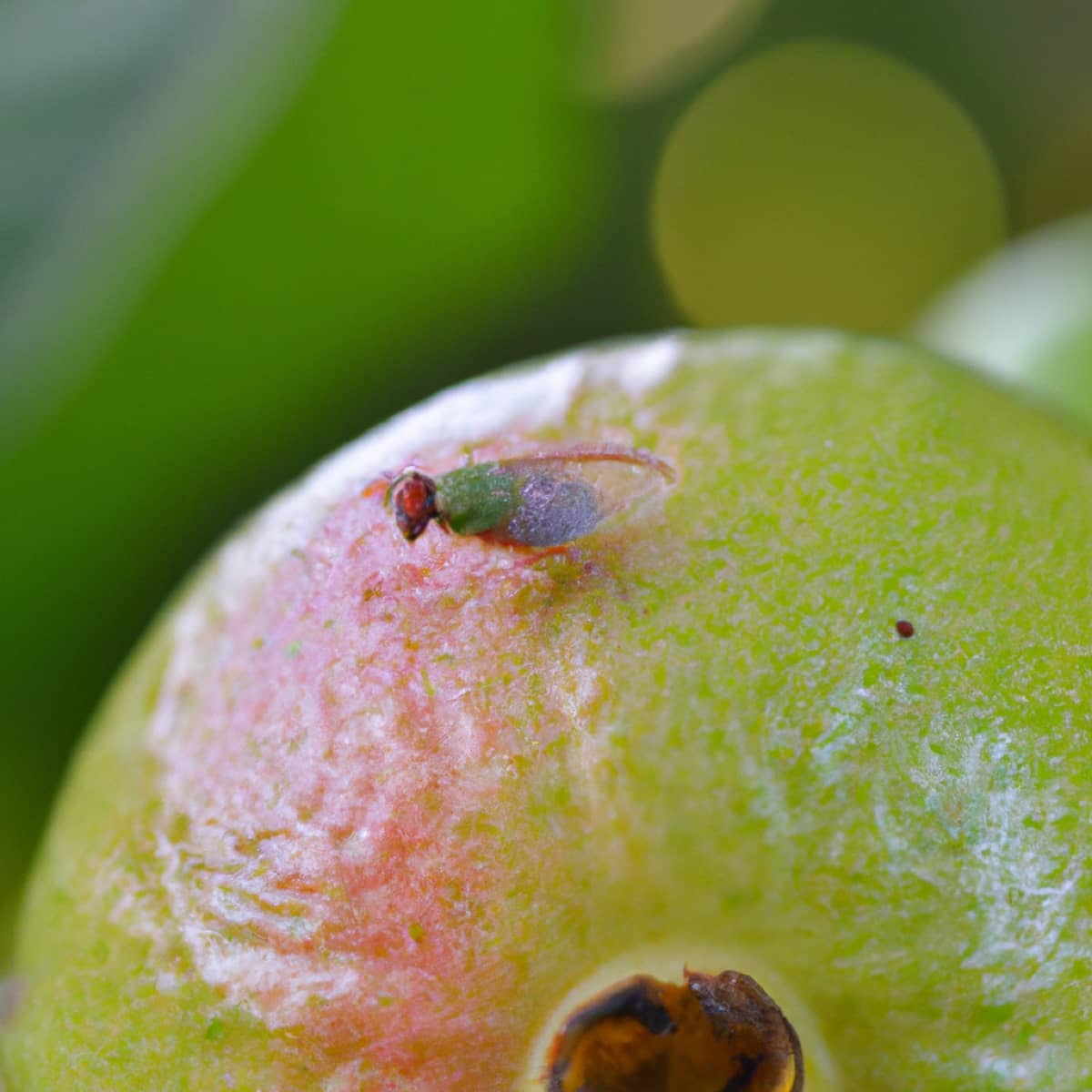
Fruit fly damaging symptoms on Guava plant
Fruit fly infestations can cause significant damage to guava plants. Some of the symptoms of fruit fly damage on guava plants include:
- Discoloration and decay: Guava fruits infested by fruit fly larvae may develop dark, discolored skin spots and become soft and mushy as the larvae consume the fruit from the inside.
- Damage to semi-ripe fruits: Adults and maggots attack them, making them unappealing and inedible.
- Oviposition punctures: Female fruit flies lay eggs on the surface of fruits, which small punctures on the skin can identify.
- Pulp destruction: Maggots consume the fruit’s pulp, which results in a bad-smelling, discolored, semi-liquid mass.
- Reduced growth and yield: Guava plants infested with fruit flies may have reduced growth and yield due to the damage caused to the fruit and the wilting of leaves.
- Presence of maggots: The presence of maggots inside the fruit is the most visible symptom of fruit fly infestation.
Effective treatment for the management of fruit fly
They are attracted to ripe or overripe fruits and vegetables and fermented liquids such as wine and beer. Fruit flies can be a nuisance and contaminate food, making them important to control. Effective treatments for managing fruit flies include:
- Cultural control involves pruning and removing infested fruit and maintaining a clean orchard environment.
- Physical control involves using sticky traps to capture adult fruit flies and screens or bags to protect the fruit from infestation.
- Chemical control involves using pesticides specifically designed to target fruit flies. These should be applied according to the label instructions and with appropriate safety precautions.
- Biological control involves using natural predators or parasites to control fruit fly populations. For example, a parasitic wasp called Fopius arisanus parasitizes fruit fly eggs and larvae. Fruit fly natural enemies include parasitoids such as Opius compensates, Spalangia philippinensis, and Diachasmimorpha krauss.
- Trapping: Fruit fly traps can be purchased or homemade using materials such as apple cider vinegar or red wine mixed with a few drops of dish soap. The flies are attracted to the mixture and become trapped in the solution.
- Insecticides: Insecticides such as pyrethrin or spinosad can be used to control fruit flies. These products should be applied according to the manufacturer’s instructions and precautions.
- Sanitation: Maintaining a clean kitchen and properly storing fruits and vegetables can help prevent fruit flies from breeding. It includes regularly cleaning drains and disposing of overripe fruits and vegetables.
- Exclusion: Installing screens on windows and doors can help prevent fruit flies from entering the home.
In case you missed it: Key Rules to Maintain Water Quality in Aquaculture: Parameters, Management, Effects of Water Quality on Fish Growth
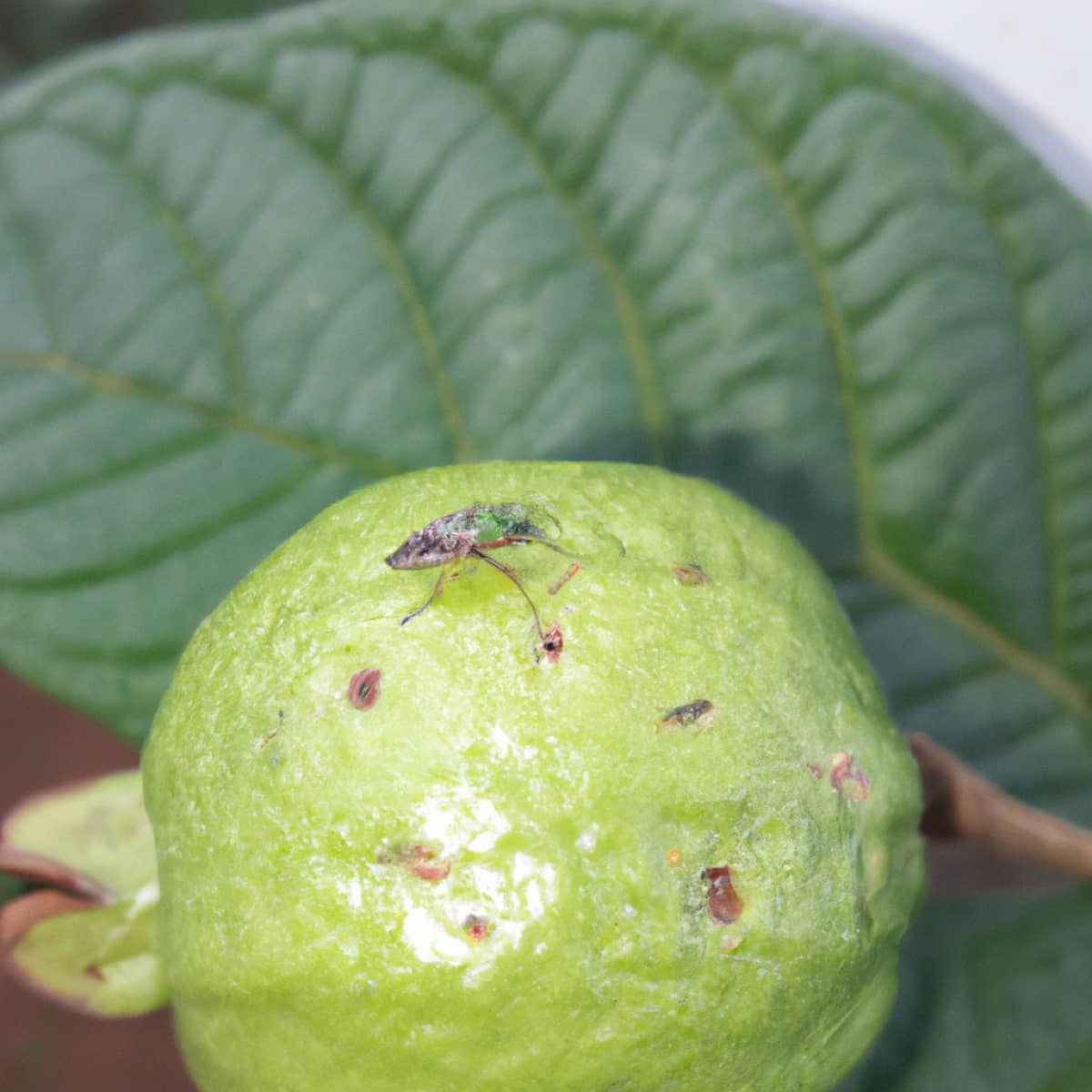
Home remedies for managing fruit flies in Guava
- Apple cider vinegar and dish soap: Mix equal volumes of apple cider vinegar and water in a bowl, add a few drops of dish soap, and place in areas where fruit flies are present. The flies will be attracted to the mixture, but the dish soap will cause them to drown.
- Red wine and dish soap: Mix a small amount of red wine with a few drops of dish soap in a bowl and place it in areas where fruit flies are present. The flies will be attracted to the wine, but the dish soap will cause them to drown.
- Banana peel trap: Place a piece of overripe banana peel in a plastic bag and poke a few small holes in the bag. The flies will be attracted to the banana and trapped in the bag.
- Cloves and orange peel: Place a few cloves and a piece of orange peel in a small container and place them in areas where fruit flies are present. The flies are attracted to the smell and will fly into the container, where they will become trapped.
- Apple cider vinegar and plastic wrap trap: This method involves filling a jar with apple cider vinegar and covering the top with plastic wrap. The fruit flies are attracted to the vinegar but cannot escape once they land on the plastic wrap.
- Paper cone trap: This method involves rolling a piece of paper into a cone shape and then taping it into a jar or container filled with apple cider vinegar or fermented fruit juice. The fruit flies are attracted to the scent and will fly into the cone but cannot escape.
Chemical methods to get rid of fruit fly in Guava
Chemical methods are an option to control fruit fly infestations in Guava. Still, they should be used with other control methods, such as cultural and physical control and integrated pest management (IPM) approaches. The following are some chemical methods for controlling fruit flies in Guava:
- Insecticides: Several insecticides are labeled for use against fruit flies in Guava. These include organophosphates, carbamates, and neonicotinoids. Always follow the label instructions when using pesticides and choose an insecticide specifically labeled for use against fruit flies.
- Baits: Some insecticides are available in the form of baits, which can be used to attract and control fruit flies. These baits often contain a food attractant, such as protein or sugar, combined with an insecticide.
- Mating disruption: This method uses pheromone-based products to disrupt the mating of fruit flies, which can reduce their population.
In case you missed it: Homemade Goat Feed Recipes: How to Make, Organic, Ingredients, and Simple DIY Goat Feed Mix
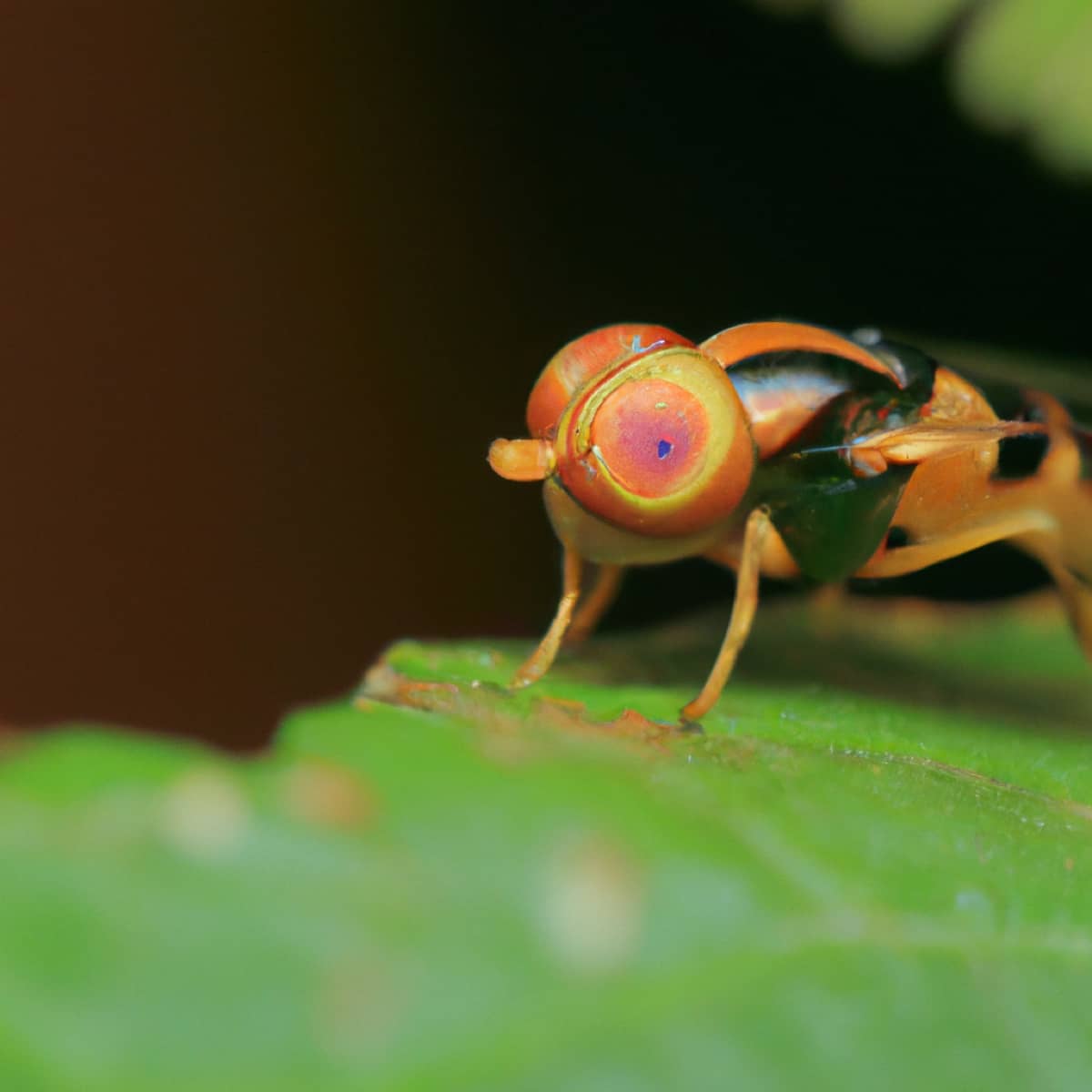
Organic methods to get rid of fruit fly in Guava
- Use yellow sticky traps: Fruit flies are attracted to yellow and fly toward yellow objects. Place yellow sticky traps near the guava trees to trap the flies.
- Use apple cider vinegar: Mix apple cider vinegar with dish soap and place it near the guava trees. They will be attracted to the vinegar and drown in the solution.
- Use a homemade trap: Mix one sugar with three parts water and a few drops of dish soap. Place the mixture in a container near the guava trees. They will be attracted to the sugar and drown in the solution.
- Use diatomaceous earth: Diatomaceous earth is a natural pesticide made from the fossilized remains of tiny aquatic organisms. Add diatomaceous earth around the base of the guava tree to keep fruit flies away.
- Keep the area clean: Fruit flies are attracted to rotting fruit and vegetables. Keep the area around the guava trees clean to reduce the chance of fruit flies laying eggs nearby.
For effective management of fruit flies, it is essential to take a holistic approach. It includes keeping the area around the guava trees clean, removing and disposing of any fallen fruit, and monitoring the tree for signs of infestation. Additionally, crop rotation and planting other fruit trees that are less attractive to fruit flies can also help reduce the infestation risk.
Conclusion
Fruit flies can be a major problem for guava growers. Still, with early detection, proper treatment, and effective management, it is possible to control these pests and protect your crop. Regarding treatment, there are both chemical and organic options available. Chemical control methods include using pesticides and insecticides. In contrast, organic control methods include using sticky traps, apple cider vinegar, homemade traps, and diatomaceous earth.
In case you missed it: Key Rules to Start Fish Farming in Denmark: Business Plan, Breeds, Setup Cost, and Profit
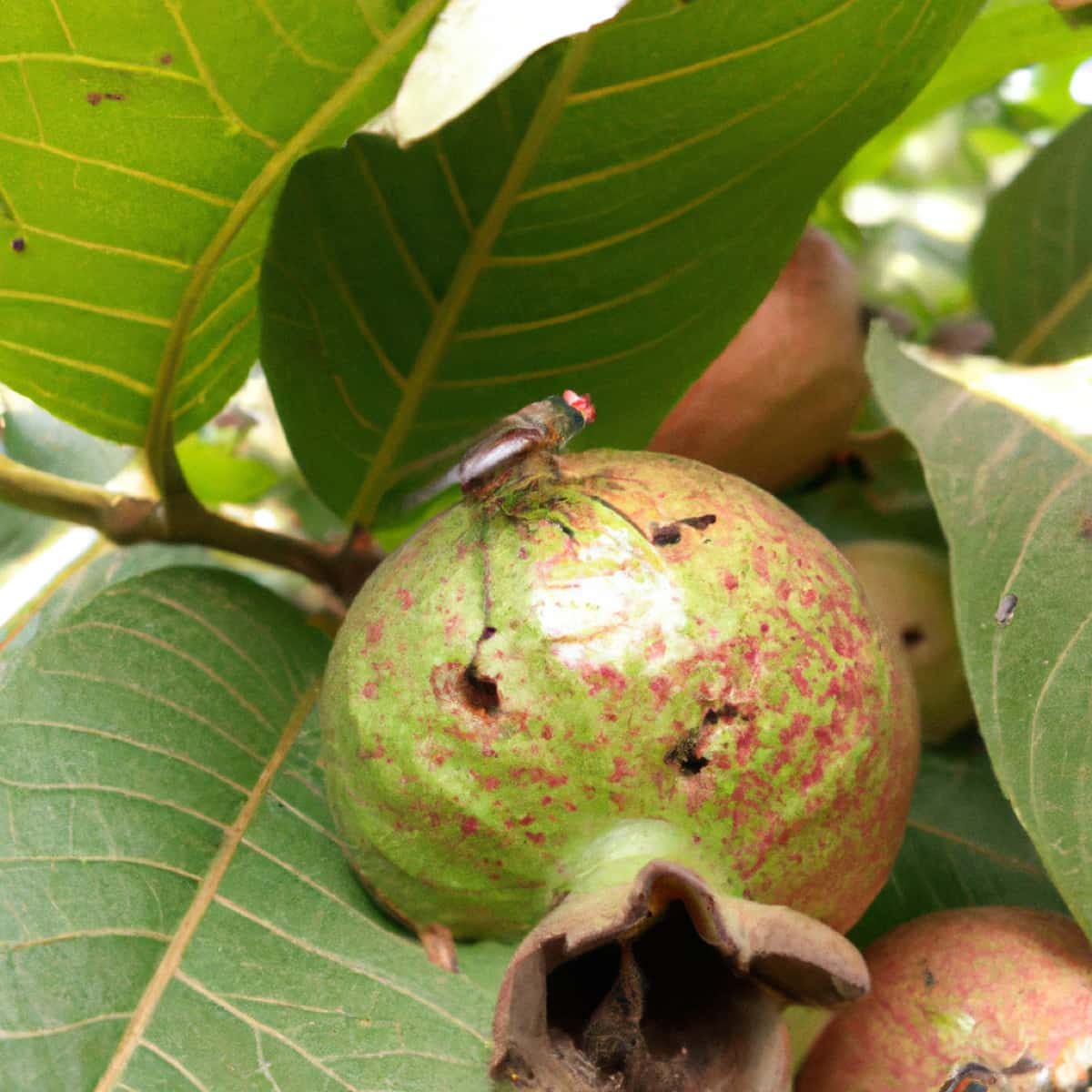
It is important to note that while chemical control methods may be more effective in the short term, they can also negatively affect the environment and should be used with caution. While chemical control methods can be effective, it is always best to use organic methods, if possible, to minimize the negative environmental impact.
- Types of Pesticides Used in Agriculture: A Beginner’s Guide
- Economical Aquaculture: A Guide to Low-Budget Fish Farming
- 15 Common Planting Errors That Can Doom Your Fruit Trees
- How to Make Houseplants Bushy: Effective Tips and Ideas
- Innovative Strategies for Boosting Coconut Pollination and Yield
- Pollination Strategies for Maximum Pumpkin Yield
- The Complete Guide to Chicken Fattening: Strategies for Maximum Growth
- Natural Solutions for Tulip Problems: 100% Effective Remedies for Leaf and Bulb-Related Issues
- Revolutionizing Citrus Preservation: Towards a Healthier, Greener Future
- Natural Solutions for Peony Leaf and Flower Problems: 100% Effective Remedies
- Maximizing Profits with Avocado Contract Farming in India: A Comprehensive Guide
- Natural Solutions for Hydrangea Problems: 100% Effective Remedies for Leaf and Flowers
- The Ultimate Guide to Choosing the Perfect Foliage Friend: Bringing Life Indoors
- From Sunlight to Sustainability: 15 Ways to Use Solar Technology in Agriculture
- The Ultimate Guide to Dong Tao Chicken: Exploring from History to Raising
- The Eco-Friendly Makeover: How to Convert Your Unused Swimming Pool into a Fish Pond
- Mastering the Art of Delaware Chicken Farming: Essentials for Healthy Backyard Flocks
- 20 Best Homemade Fertilizers for Money Plant: DIY Recipes and Application Methods
- How to Craft a Comprehensive Free-Range Chicken Farming Business Plan
- Brighten Your Flock: Raising Easter Egger Chickens for Beauty and Bounty
- How to Optimize Your Poultry Egg Farm Business Plan with These Strategies
- Subsidy for Spirulina Cultivation: How Indian Government Schemes Encouraging Spirulina Farmers
- Ultimate Guide to Raising Dominique Chickens: Breeding, Feeding, Egg-Production, and Care
- Mastering the Art of Raising Jersey Giant Chickens: Care, Feeding, and More
- Ultimate Guide to Raising Legbar Chickens: Breeding, Farming Practices, Diet, Egg-Production
- How to Raise Welsummer Chickens: A Comprehensive Guide for Beginners
- How to Protect Indoor Plants in Winter: A Comprehensive Guide
- Ultimate Guide to Grow Bag Gardening: Tips, Tricks, and Planting Ideas for Urban Gardeners
- Guide to Lotus Cultivation: How to Propagate, Plant, Grow, Care, Cost, and Profit
- Agriculture Drone Subsidy Scheme: Government Kisan Subsidy, License, and How to Apply Online
- Ultimate Guide to Raising Araucana Chickens: Breed Profile, Farming Economics, Diet, and Care
- Bringing Hydroponics to Classroom: Importance, Benefits of Learning for School Students
- Ultimate Guide to Raising Polish Chickens: Breed Profile, Farming Economics, Diet, and Care
- Ultimate Guide to Raising Australorp Chickens: Profile, Farming Economics, Egg Production, Diet, and Care
- Silkie Chicken Farming: Raising Practices, Varieties, Egg Production, Diet, and Care
- Sussex Chicken Farming: Raising Practices, Varieties, Egg Production, Diet and Care